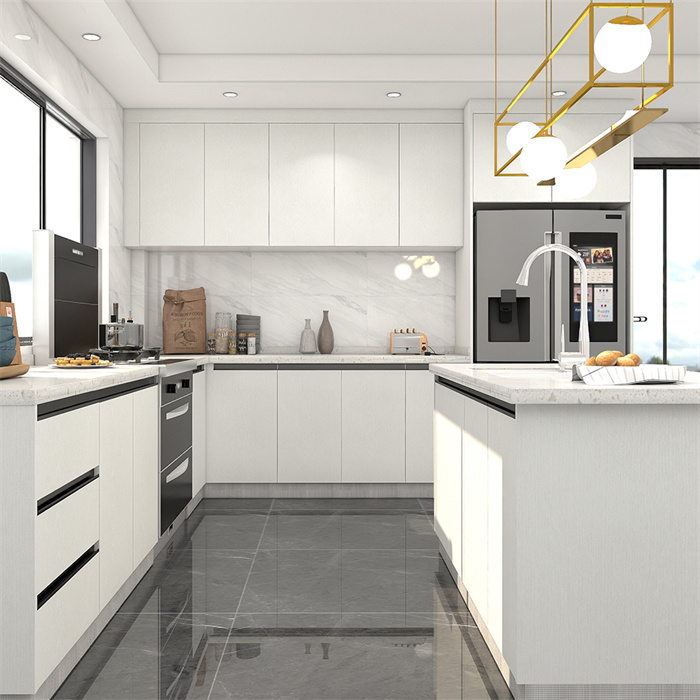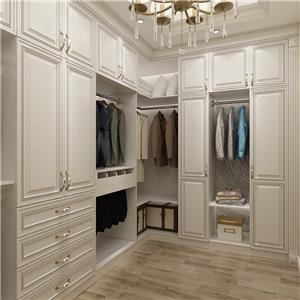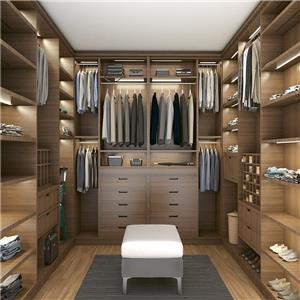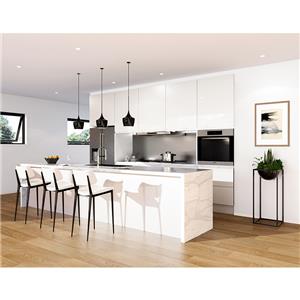Everything You Need to Know About Kitchen Cupboard Set Cabinets
Everything You Need to Know About Kitchen Cupboard Set Cabinets
Introduction
The kitchen is often considered the heart of the home, and a crucial element in creating a functional and aesthetically pleasing kitchen is the kitchen cupboard set cabinet. These cabinets not only provide essential storage space for cookware, utensils, food items, and more but also play a significant role in defining the overall style and layout of the kitchen. In this comprehensive article, we will delve into every aspect of kitchen cupboard set cabinets, from their various types and styles to the process of choosing, installing, and maintaining them. Whether you are planning a new kitchen renovation or simply looking to upgrade your existing cabinets, this guide will serve as your go - to resource.
Understanding Kitchen Cupboard Set Cabinets
Definition and Components
Types of Kitchen Cupboard Set Cabinets
Base Cabinets
Base cabinets form the foundation of the kitchen cabinetry. They are usually 34.5 inches tall (including a 1.5 - inch countertop) and come in various widths, commonly ranging from 12 to 48 inches. These cabinets can have different configurations. Some have a single large door, which is useful for storing big pots and pans. Others may have two or more doors, or a combination of doors and drawers. Drawer - based base cabinets are extremely convenient for organizing utensils, cutlery, and smaller kitchen tools. For example, a cutlery drawer with dividers can keep forks, knives, and spoons neatly separated.
Wall Cabinets
Wall cabinets are installed above the countertops or appliances. They are generally shallower than base cabinets, with a depth of around 12 inches. Their height can vary, but standard heights are 30, 36, or 42 inches. Wall cabinets are great for storing items that you need to access frequently, like coffee mugs, plates, and spices. Some wall cabinets come with glass doors, which can add an elegant touch to the kitchen and are perfect for displaying decorative dishware or glassware.
Tall Cabinets
Tall cabinets are vertical storage units that reach from the floor to near the ceiling. They are typically 84 inches tall. These cabinets are excellent for maximizing storage in a small space. They can be used to store large - format items such as brooms, vacuum cleaners, or extra - large food packages. Some tall cabinets are designed with pull - out shelves or drawers, making it easier to access items stored at the back. For instance, a pantry - style tall cabinet with adjustable pull - out shelves can keep your dry food items organized and easily visible.
Styles of Kitchen Cupboard Set Cabinets
Traditional Styles
Shaker Style
The Shaker style is a classic and timeless choice for kitchen cabinets. It features simple, flat - panel doors with a recessed center panel. The clean lines and minimal ornamentation of Shaker - style cabinets make them suitable for a variety of kitchen decors, from traditional to contemporary. These cabinets are often made of solid wood, such as oak, maple, or cherry, which gives them a warm and natural look. The hardware used on Shaker - style cabinets is usually simple and understated, like small round knobs or cup pulls.
Raised Panel Style
Raised panel cabinets have doors with a central panel that is raised above the frame. This style adds a sense of depth and elegance to the kitchen. Raised panel cabinets are often associated with more traditional or formal kitchen designs. They can be made of wood, and the panels can be carved or molded for additional decorative effect. The frames of raised panel cabinets can be stained or painted in a variety of colors, with popular choices including rich wood stains for a traditional look or white paint for a more classic, cottage - style feel.
Contemporary Styles
Flat - Panel Style
Flat - panel cabinets, also known as slab - style cabinets, have sleek, flat doors with no raised or recessed panels. This style is highly popular in modern and contemporary kitchen designs. Flat - panel cabinets can be made of materials like laminate, high - gloss lacquer, or even metal. They give the kitchen a clean, uncluttered look, and are often paired with minimalist hardware, such as handle - less designs or thin, linear pulls. The simplicity of flat - panel cabinets makes them a great choice for small kitchens, as they can create an illusion of more space.
Glossy and High - Tech Styles
Cabinets with glossy finishes, such as high - gloss lacquer or acrylic, are a staple in contemporary and high - tech kitchen designs. These cabinets reflect light, which can make the kitchen appear brighter and more spacious. They are often combined with stainless - steel appliances and modern lighting fixtures to create a sleek, high - end look. Some high - tech cabinets may also feature innovative storage solutions, like built - in charging stations for electronic devices or hidden pull - out compartments for a more streamlined appearance.
Choosing the Right Kitchen Cupboard Set Cabinets
Consider Your Kitchen Layout
Galley Kitchens
In a galley kitchen, which has two parallel countertops, space is often limited. For this layout, base cabinets with a combination of drawers and doors can be very useful. Wall cabinets should be installed at a height that allows for easy access while still maximizing storage. Consider using corner cabinets with specialized storage solutions, such as lazy Susans, to make the most of the limited corner space.
L - Shaped Kitchens
L - shaped kitchens offer more flexibility in cabinet placement. Base cabinets can be arranged along the two perpendicular walls, and wall cabinets can be installed above them. A peninsula can be added to an L - shaped kitchen, and base cabinets can be extended onto the peninsula for additional storage and counter space. Tall cabinets can be placed at the end of one of the walls to provide vertical storage.
U - Shaped Kitchens
U - shaped kitchens provide a large amount of storage and counter space. Base cabinets line three walls, and wall cabinets are installed above. The corner areas in a U - shaped kitchen can be utilized with corner cabinets or specialized corner drawers. You can also consider installing a kitchen island in the center of a U - shaped kitchen, which can have its own set of base cabinets for extra storage.
Evaluate Your Storage Needs
Cookware and Utensils
If you have a large collection of cookware, such as pots, pans, and baking sheets, you will need base cabinets with enough space to accommodate them. Drawer - based cabinets are ideal for storing utensils, as they keep them organized and easily accessible. Consider cabinets with built - in pot racks or utensil dividers.
Food Storage
For storing food items, you may need a combination of wall cabinets and tall cabinets. Wall cabinets can be used for storing dry goods like pasta, rice, and spices, while tall cabinets can be converted into a pantry area with adjustable shelves for larger food packages.
Appliance Storage
If you have small appliances such as a toaster, blender, or coffee maker, you may want to consider cabinets with pull - out shelves or dedicated appliance garages. This keeps the countertops clear and the appliances organized.
Budget Considerations
Cost of Materials
The cost of kitchen cabinets can vary greatly depending on the materials used. Solid wood cabinets are generally more expensive but offer durability and a high - quality look. Laminate cabinets are more budget - friendly and come in a wide range of colors and patterns. Medium - density fiberboard (MDF) cabinets are also an affordable option, especially when covered with a veneer or painted.
Custom vs. Stock Cabinets
Stock cabinets are pre - made and come in standard sizes and styles. They are the most affordable option. Semi - custom cabinets allow for some customization, such as choosing different door styles or finishes, and are moderately priced. Custom cabinets are made to order according to your specific design and 尺寸 requirements but are the most expensive. Consider your budget and how much customization you need before making a decision.
Installation of Kitchen Cupboard Set Cabinets
Preparation Before Installation
Measure the Kitchen Space
Accurate measurements are crucial for a successful cabinet installation. Measure the length and height of the walls where the cabinets will be installed. Make sure to account for any obstacles such as windows, doors, or electrical outlets. Measure the floor to ensure it is level, as an uneven floor can cause problems with the installation of base cabinets.
Gather Tools and Materials
You will need tools such as a drill, screwdriver, level, tape measure, and saw (if you need to make any cuts). You will also need mounting hardware, such as screws, wall anchors, and brackets. Additionally, have any necessary shims on hand to level the cabinets.
Installation Process
Installing Base Cabinets
Start by installing the corner base cabinet first. Use a level to ensure it is plumb (vertical) and level (horizontal). Secure the cabinet to the wall using wall anchors and screws. Then, install the adjacent base cabinets, making sure to align the fronts of the cabinets and use shims if necessary to level them. Connect the cabinets together using screws or special cabinet - joining hardware.
Installing Wall Cabinets
Mark the height on the wall where the wall cabinets will be installed. Use a level to draw a straight line. Start with the corner wall cabinet and hang it on the wall using wall brackets. Make sure it is level and plumb. Install the remaining wall cabinets, connecting them together as you go. The distance between the wall cabinets and the base cabinets should be appropriate for comfortable use, usually around 18 - 20 inches.
Installing Tall Cabinets
Tall cabinets are installed in a similar manner to base cabinets. However, due to their height, extra care must be taken to ensure they are plumb and level. Secure the tall cabinet to the floor and the wall using appropriate hardware.
Maintenance and Care of Kitchen Cupboard Set Cabinets
Cleaning Your Cabinets
Regular Dusting
Use a soft, dry cloth to dust the cabinets regularly. This helps to prevent the build - up of dirt and grime, which can be more difficult to clean later. Pay attention to the edges, corners, and any decorative details on the cabinets.
Cleaning the Surfaces
For wood cabinets, use a mild wood cleaner and a soft cloth. Avoid using abrasive cleaners, as they can scratch the surface. Laminate cabinets can be cleaned with a damp cloth and a mild detergent. High - gloss cabinets may require a special cleaner to maintain their shine. Make sure to dry the cabinets thoroughly after cleaning to prevent water damage.
Repairing Minor Damages
Scratches and Dents
For minor scratches on wood cabinets, you can use a wood stain marker that matches the color of the cabinet to cover the scratch. Dents can sometimes be repaired by steaming the area with a damp cloth and a hot iron. For laminate cabinets, small scratches can be filled with a laminate repair kit.
Loose Hinges or Drawer Slides
If you notice that cabinet doors are not closing properly or drawers are not sliding smoothly, check the hinges and drawer slides. Tighten any loose screws. If the hinges or slides are damaged, they may need to be replaced.
Trends in Kitchen Cupboard Set Cabinets
Smart Cabinets
Integrated Technology
Smart cabinets are becoming increasingly popular. These cabinets may have features such as built - in LED lighting that automatically turns on when the cabinet door is opened. Some smart cabinets also come with wireless charging pads for your mobile devices, or they can be connected to a home automation system, allowing you to control the cabinet lighting or access settings from your smartphone.
Intelligent Storage Solutions
Smart cabinets may include sensors that can detect when items are running low in the cabinet. For example, a pantry cabinet with sensors can alert you when you are running out of flour or sugar. There are also cabinets with self - closing drawers and doors, which are not only convenient but also help to prevent the cabinets from being left open accidentally.
Sustainable and Eco - Friendly Cabinets
Eco - Conscious Materials
There is a growing trend towards using sustainable materials in kitchen cabinetry. Cabinets made from reclaimed wood are a popular choice, as they give new life to old materials. Bamboo is also a sustainable option, as it is a fast - growing plant. Additionally, cabinets made from recycled materials or materials with low - VOC (volatile organic compound) emissions are becoming more common, as they are better for the environment and for indoor air quality.
Energy - Efficient Features
Some kitchen cabinet manufacturers are incorporating energy - efficient features into their products. For example, cabinets with energy - efficient LED lighting use less power than traditional lighting options. There are also cabinets with ventilation systems that help to regulate the temperature inside the cabinet, which can be beneficial for storing certain food items or protecting sensitive cookware.





